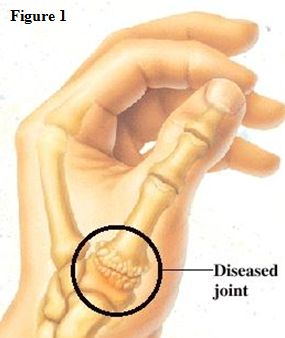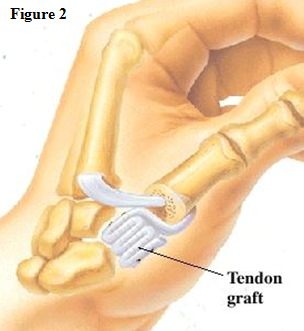Basal Joint/thumb Pain
The basal joint is the joint between the thumb and the wrist. Arthritis at this joint [figure 1] is most common in women over 40, but anyone can get it. The primary symptom is pain with use of the thumb when lifting or opening jars or doors. Pain may increase with weather changes and the joint may swell or become stiff.
When diagnosed early, basal joint arthritis often responds well to nonsurgical treatment including temporary use of a splint, anti-inflammatory medications, or injection of steroid medication. If these treatments fail to relieve symptoms, surgery may be recommended.
Basal joint arthroplasty (replacement) is performed on an outpatient basis under general anesthesia by Dr. Joon Ahn. An incision is made over the basal joint and the arthritic bone (the trapezium) is removed. A small incision is made in the forearm in order to remove a piece of tendon. That tendon is then used to replace the bone that was removed [figure 2].
The joint is immobilized in a splint for 6-7 weeks. Occupational therapy is typically begun 6 weeks after surgery and includes range of motion exercises, scar mobilization and desensitization, and pain relieving treatments. Strengthening exercises are added at 10 weeks post-op. Patients typically return to regular use of the hand 14 weeks after surgery.











